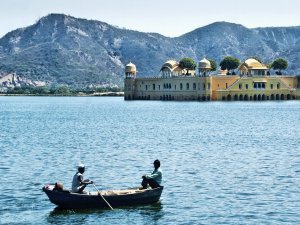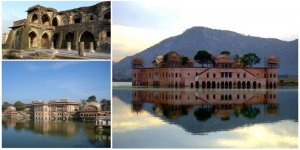Jal Mahal or the Water Palace, situated in the middle of Man Sagar Lake is one of the most famous attractions the city of Jaipur has to offer. Amidst the chaos of the city, Jal Mahal is a serene spot where a tourist can steal a few moments. It’s picturesque location and architecture brings cinematographers to shoot umpteen number of films here.
Jal Mahal Jaipur
Jal Mahal, located 4 kilometres north of the city. The ride to the Palace also included visitors to the Amer Fort, as the fort is on their way to the palace. Since the palace was right smack in the middle of a water body, boats or gondolas were used to reach the destination. Gondolas were also decorated and aimed to service couples for a short romantic ride to the palace, but this service is no longer available.

Although Jal Mahal looks pretty, the place is devoid of activities. All that’s there are a few bazaars and oont sawaari (camel ride), whose services are also dwindling in number.
The scientific structure of the palace remains unknown to the tourists visiting Jal Mahal. From a distance, it appears to look like a single-storied building, but in reality, there are four different levels submerged in the water. The solid substance with which the entire palace has been made can hold back millions of litres of water and the mortars made of lime prevent the seepage of water for over 250 years.

Jal Mahal was constructed using the infamous pink sandstone, which is used in many of the buildings in Jaipur city. The palace sports a Rajput-symmetrical design, a sight common to Rajasthan. The officials stationed in the country try everything they can to preserve the palace.
Less than 10 years ago, the palace was nothing but an abandoned ruin with water leakage and foul smell. The ecologists of the palace took up the initiative to turn the ruins back to its former glory.

Jal Mahal was constructed by Maharaja Madho Singh I, initially as a lodge for himself and his entourage during his dock hunting parties. His son, Madho Singh II made tremendous changes to the initial construction.
Jal Mahal is accessible from National Highway No. 8 (Jaipur-Delhi Highway). It’s advised to visit Jal Mahal during monsoon according to local tour guides and various websites as the place will look even more vibrant and pleasant. The rainy atmosphere gives an edge to the sandstone used in the architecture of the building. It is advised to visit the palace between October to March.



